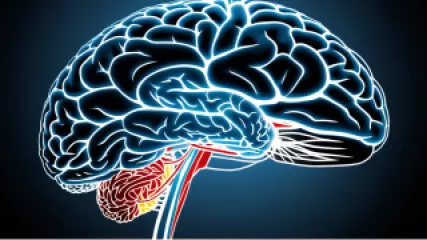Unleashing Cognitive Flexibility: The Ultimate Guide
Unleashing Cognitive Flexibility: The Ultimate Guide
In today's fast-paced and ever-changing world, the ability to adapt, think creatively, and approach problems from multiple angles is becoming increasingly essential. This is where cognitive flexibility comes into play – the capacity to shift our mindsets, perspectives, and mental strategies to effectively navigate life's complexities. Whether you're facing a challenging work project, navigating a personal transition, or simply looking to enhance your overall cognitive abilities, mastering cognitive flexibility can be a game-changer.
In this comprehensive guide, we'll delve into the fascinating world of cognitive flexibility, exploring its benefits, the science behind it, and practical techniques you can use to cultivate this invaluable skill. By the end of this journey, you'll be equipped with the knowledge and tools to unlock your full potential and thrive in an ever-evolving landscape.
Understanding Cognitive Flexibility
Cognitive flexibility is the ability to shift our thinking, adjust our mental gears, and approach problems from diverse perspectives. It's the antithesis of rigidity and narrow-mindedness, allowing us to adapt to new situations, generate creative solutions, and learn from our experiences.
At its core, cognitive flexibility involves several key cognitive processes, including:
- Attention control: The capacity to focus our attention on relevant information and ignore distractions.
- Working memory: The ability to hold and manipulate information in our minds, enabling us to make connections and draw insights.
- Inhibition control: The skill to suppress automatic responses and consider alternative options, preventing us from getting stuck in habitual patterns.
- Set-shifting: The capacity to switch between different mental sets, tasks, or perspectives, allowing us to explore new possibilities.
When these cognitive processes work in harmony, they enable us to navigate complex situations, generate innovative ideas, and make well-informed decisions. Cognitive flexibility is often described as the "Swiss Army knife" of the mind, equipping us with the versatility to adapt and thrive in an ever-changing world.
The Benefits of Cognitive Flexibility
Developing cognitive flexibility can have a profound impact on various aspects of our lives. Here are some of the key benefits that this powerful cognitive skill can offer:
Enhanced Problem-Solving and Decision-Making
By cultivating cognitive flexibility, we can approach problems from multiple angles, consider a wider range of solutions, and make more informed decisions. This allows us to navigate challenges more effectively and find innovative ways to overcome obstacles.
Improved Creativity and Innovation
Cognitive flexibility is closely linked to our ability to think outside the box, generate novel ideas, and combine existing knowledge in unique ways. When we can shift our mindsets and perspectives, we unlock new avenues for creative expression and problem-solving.
Better Emotional Regulation and Stress Management
Cognitive flexibility also plays a crucial role in our emotional well-being. By being able to reframe our thoughts and adopt different viewpoints, we can better manage our emotions, reduce stress, and cultivate greater resilience in the face of life's ups and downs.
Enhanced Learning and Adaptability
Individuals with strong cognitive flexibility tend to be more adept at acquiring new skills, adapting to changing environments, and transferring knowledge from one domain to another. This adaptability allows us to thrive in an increasingly complex and dynamic world.
Improved Academic and Professional Performance
The benefits of cognitive flexibility extend to academic and professional settings. Students who possess this skill often excel in their studies, as they can easily switch between different concepts, apply their knowledge in diverse contexts, and come up with innovative solutions. In the workplace, cognitive flexibility can lead to increased productivity, better teamwork, and greater career success.
The Science Behind Cognitive Flexibility
Cognitive flexibility has its roots in the intricate workings of the brain, particularly the prefrontal cortex and its interaction with other brain regions. Let's delve into the scientific underpinnings of this remarkable cognitive ability:
The Role of the Prefrontal Cortex
The prefrontal cortex, located in the front part of the brain, is often referred to as the "executive control center." This region is responsible for higher-order cognitive functions, such as decision-making, problem-solving, and cognitive control. The prefrontal cortex plays a crucial role in regulating and coordinating the various cognitive processes that underlie cognitive flexibility, including attention, working memory, and inhibition control.
Neuroplasticity and Cognitive Flexibility
Cognitive flexibility is closely linked to the brain's remarkable ability to adapt and change, known as neuroplasticity. Throughout our lives, the brain can reorganize its neural connections and pathways in response to new experiences, learning, and environmental demands. This neural plasticity allows us to update our mental models, acquire new skills, and shift our cognitive strategies as needed.
The Interplay of Brain Regions
Cognitive flexibility involves the coordinated effort of multiple brain regions. While the prefrontal cortex plays a central role, other areas such as the anterior cingulate cortex, the parietal lobe, and the basal ganglia also contribute to our ability to adapt and switch between different cognitive sets. The dynamic interplay and efficient communication between these brain regions enable us to fluidly navigate various cognitive challenges.
The Impact of Aging and Neurological Conditions
As we age, the brain's cognitive flexibility can gradually decline due to factors such as reduced neuroplasticity, changes in brain structure and function, and the onset of certain neurological conditions. However, research has shown that cognitive flexibility can be maintained and even improved through targeted cognitive training, physical exercise, and lifestyle interventions, even in older adults.
Understanding the scientific underpinnings of cognitive flexibility not only helps us appreciate the complexity of this cognitive ability but also provides insights into how we can cultivate and enhance it through various interventions and strategies.
Cultivating Cognitive Flexibility
Now that we've explored the foundations of cognitive flexibility, let's delve into the practical ways you can develop and strengthen this invaluable skill. Here are some proven techniques and exercises to unleash your cognitive flexibility:
Mindfulness and Meditation
Engaging in mindfulness practices and meditation can enhance cognitive flexibility by improving our attention control, inhibition, and ability to shift perspectives. Regular mindfulness exercises can help us become more aware of our thoughts, emotions, and habitual patterns, making it easier to break free from rigid thinking and explore new possibilities.
Brain Teasers and Puzzles
Regularly challenging your brain with puzzles, brain teasers, and cognitive games can help develop cognitive flexibility. These activities require you to think creatively, shift between different problem-solving strategies, and adapt your approach as you encounter new challenges. Examples include crossword puzzles, Sudoku, and logic-based games.
Learning New Skills
Stepping outside your comfort zone and learning new skills can be a powerful way to cultivate cognitive flexibility. Whether it's learning a new language, mastering a musical instrument, or exploring a new hobby, the process of acquiring and applying new knowledge and skills can help you become more adaptable and open-minded.
Varied Experiences and Exposure
Exposing yourself to a diverse range of experiences, perspectives, and environments can also enhance your cognitive flexibility. Engaging with people from different backgrounds, traveling to new places, and exploring unfamiliar cultural practices can broaden your horizons and challenge your preconceptions, encouraging you to think and behave in more flexible ways.
Structured Cognitive Training
For a more targeted approach to developing cognitive flexibility, consider engaging in structured cognitive training programs. These may include computerized cognitive exercises, neurofeedback training, or cognitive-behavioral therapy techniques that specifically target and strengthen the cognitive processes underlying cognitive flexibility.
Stress Management and Emotional Regulation
Chronic stress and emotional dysregulation can hinder cognitive flexibility, as they can lead to a narrowing of our mental focus and a tendency to rely on rigid, habitual responses. Engaging in stress management techniques, such as deep breathing, exercise, and relaxation practices, can help promote a more flexible and adaptable mindset.
Lifestyle Factors and Brain Health
Maintaining a healthy lifestyle can also contribute to the development and preservation of cognitive flexibility. Factors such as regular physical activity, a balanced diet, adequate sleep, and social engagement have all been linked to improved cognitive function and neuroplasticity, which are essential for cognitive flexibility.
Remember, cultivating cognitive flexibility is a journey, and it's essential to be patient and persistent in your efforts. By incorporating these techniques into your daily life, you'll gradually see improvements in your ability to adapt, problem-solve, and thrive in an ever-changing world.
Cognitive Flexibility in Action
To illustrate the practical applications of cognitive flexibility, let's consider the following real-world examples:
Adapting to a Career Transition
When Harrison Harper lost his job due to a company restructuring, he was initially overwhelmed and unsure of his next steps. However, by drawing on his cognitive flexibility, Harrison was able to reframe the situation, explore new career possibilities, and acquire the skills needed to transition into a fulfilling role in a different industry. His ability to shift his mindset and approach the challenge from multiple angles ultimately led to a successful career change.
Navigating a Personal Crisis
Jordan Young faced a significant personal crisis when their long-term relationship ended unexpectedly. Instead of getting stuck in a cycle of negative emotions, Jordan utilized their cognitive flexibility to explore new coping strategies, seek support from a diverse network of friends and family, and gradually reframe their perspective on the situation. This flexibility allowed Jordan to move forward and emerge from the crisis with a renewed sense of purpose and personal growth.
Fostering Innovation in the Workplace
As the lead product designer at a technology startup, Malia Scott was tasked with developing a new mobile application. Rather than relying on familiar design principles, Malia tapped into her cognitive flexibility to consider alternative approaches, seek input from cross-functional teams, and experiment with unconventional solutions. This mental agility enabled Malia and her team to create a truly innovative product that stood out in the crowded market.
These examples illustrate how cognitive flexibility can be applied in various life and professional contexts, enabling individuals to navigate challenges, adapt to change, and unlock new possibilities. By cultivating this invaluable skill, you too can become better equipped to thrive in an ever-evolving world.
Conclusion: Unleashing the Power of Cognitive Flexibility
In today's complex and rapidly changing world, the ability to think flexibly, adapt to new circumstances, and generate creative solutions is more important than ever before. By understanding the science behind cognitive flexibility and actively cultivating this skill through various techniques and lifestyle interventions, you can unlock a world of personal and professional growth.
As you continue on your journey of cognitive flexibility development, remember to be patient, experiment, and celebrate your progress along the way. Embrace the challenges, seek out new experiences, and trust in your mind's remarkable capacity to adapt and evolve. With dedication and an open mindset, you'll be well on your way to unleashing the full potential of your cognitive flexibility and thriving in an ever-changing world.
So, let's embark on this exciting exploration of cognitive flexibility together. Unlock the power of your adaptable mind, and watch as it transforms your life, your work, and your very way of being in the world.






